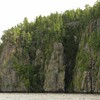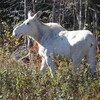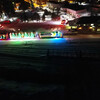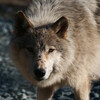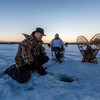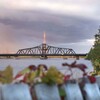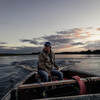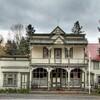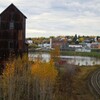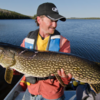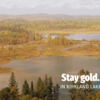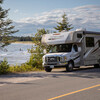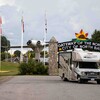Gateway to The Arctic
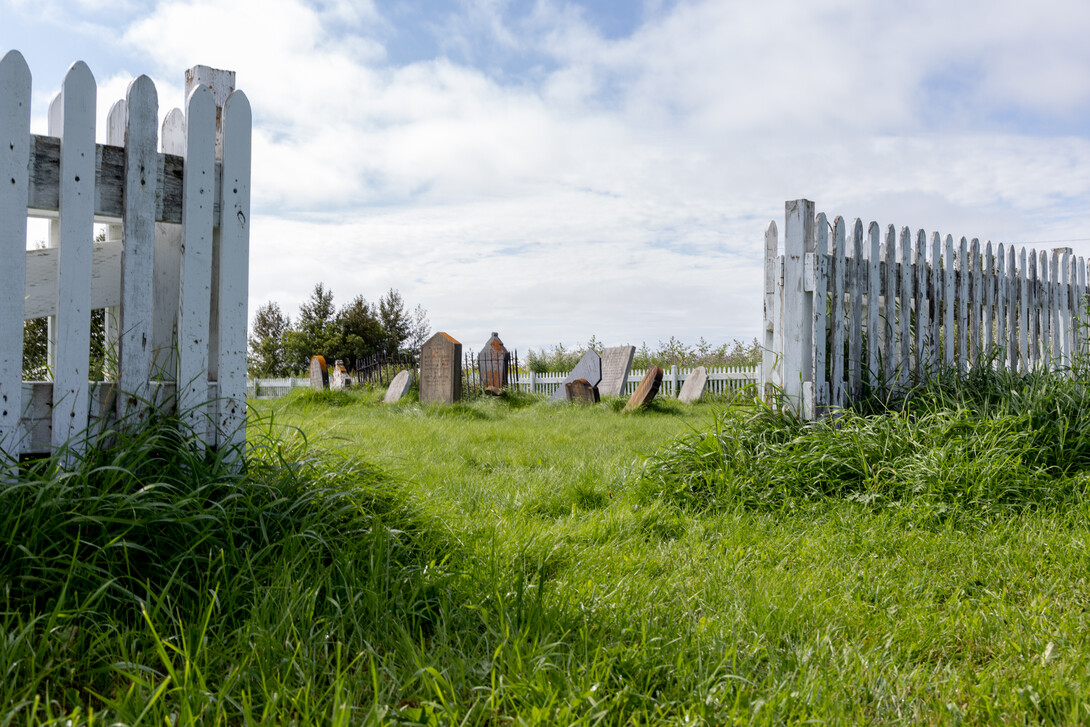
The cool morning air rushed over me as I sat on the wooden bench of Ken MacDonald's boat taxi en route to Moose Factory Island. Cold nights, and as a result cooler mornings, were a sure sign that fall was on its way. Clutching a hot coffee in one hand, I sat and watched the river fly by as we made our way toward the docks on the island. Waiting for me there was Moose Cree First Nation tourism coordinator Kim Cheechoo (Kim decided not to be photographed or filmed for this assignment).
Kim runs a small team working for Moose Cree First Nation to promote and develop tourism opportunities throughout the region. From managing tours to exhibits in the museums around Moose Factory Island, Kim’s extremely knowledgeable about the history and culture of the area. I was thrilled that I would be able to spend this time with Kim.
Kim picked me up and we drove together towards the Cree Cultural Interpretive Centre (CCIC), a beautiful indoor and outdoor display of Cree Culture, history, and craft.
The Origins of Moose Factory
Moose Factory Island plays an essential role in post-European-contact Canadian history. Originally known as Moose Fort, it was the second established post of the Hudson Bay Company and the second oldest English-speaking settlement in Ontario following Kingston.
Established in 1673, the fort served as an integral trading post between the local Cree people and Hudson Bay Company employees. Over the years of the fur trade the fort was burned down twice and exchanged hands between the French and the English before finally settling as a Hudson Bay Company outpost again.
Now, the northern section of the island hosts the Moose Factory Island Reserve with remnants of the fur trade still apparent on the southern portion of the island. There, Hudson Bay Company buildings remain, managed by the Ontario Heritage Trust.
Touring the Cree Cultural Interpretive Centre
Arriving at the CCIC, Kim and I walked out of the truck and into the indoor exhibit. The CCIC, located on the reserve, showcases beautiful displays of Cree culture, art, and history including tools, clothing, and local crafts for purchase. I walked through the displays stopping to read about everything from the development of Cree syllabics to the history of Cree people on James Bay.
One display stuck out to me. It was a wall that described the “History of the James Bay Aboriginal People,” in point form. Kim let me know that it was created by Ryan Sutherland’s grandfather.
When I completed my walkthrough, Kim took me outside to show me a large white tent resembling a longhouse in shape. We entered together. On either side of the structure were long benches while the middle gave way to a fire pit that stretched the entire length of the tent. Above the firepit were long wooden poles with several short ropes hanging down at equal intervals.
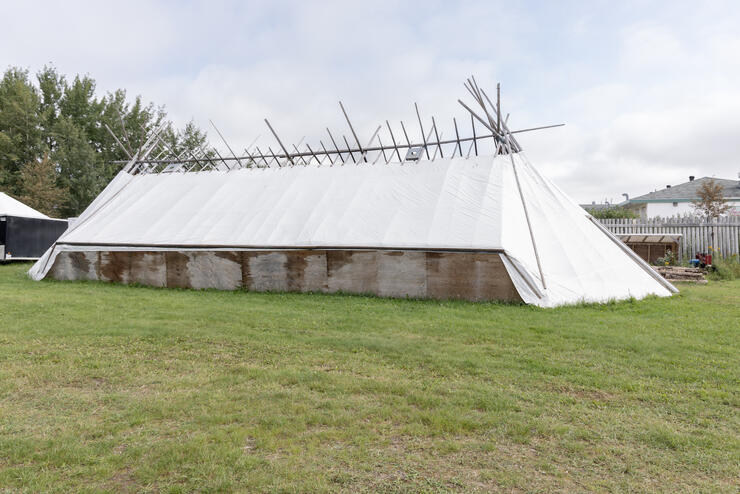
Sagabon and Celebrations
This is where Kim prepares Sagabon for large groups. In fact, the week before I arrived Moose Factory hosted Gathering of our People (GOOP), an annual celebration of Cree culture that brought in over 500 people from all over to enjoy festivities, educational opportunities, and of course, food. As part of those festivities, Kim cooked over 30 geese in the tent, slow-cooking them for four hours over the coals. When visitors come, they can arrange a traditional Sagabon with Kim to experience the delicacies of Cree cooking and I would highly recommend taking part in this opportunity.
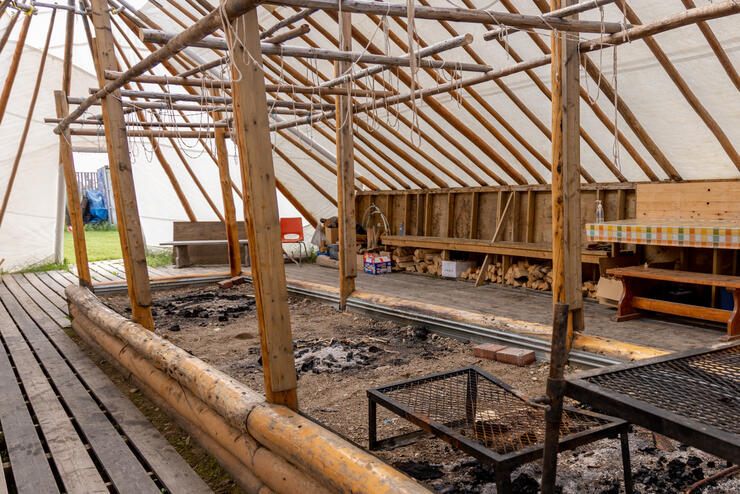
HCB History
With my mouth watering at the thought of Sagabon, we hopped back in the truck and drove to the Hudson Bay Company Staff House. Standing before us was a large white building built between 1847-50. The last surviving officer’s dwelling in Canada, the building was altered several times until it was acquired by the Ontario Heritage Trust in 1978. Now, the first floor is home to an exhibit on the history of Moose Factory featuring items from the fur trade along with Cree culture.
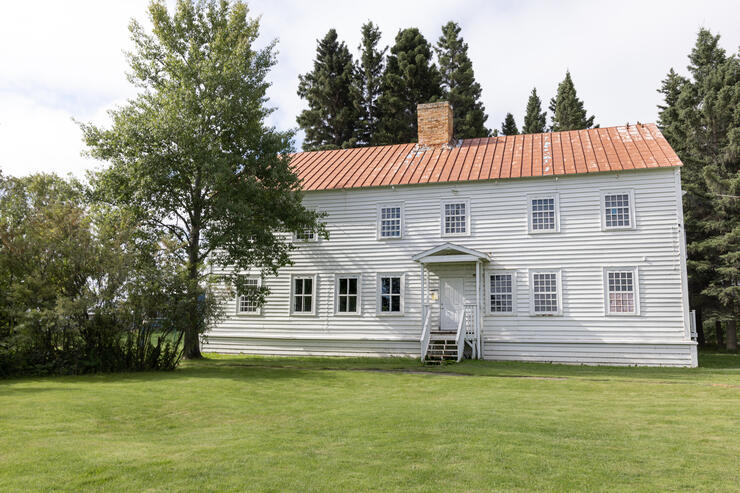
Kim unlocked the exhibit for me. As a history buff, I couldn’t contain my excitement. Inside were artifacts, letters, and informative displays telling the history of the fur trade on Moose Factory Island and the Moose Cree people.
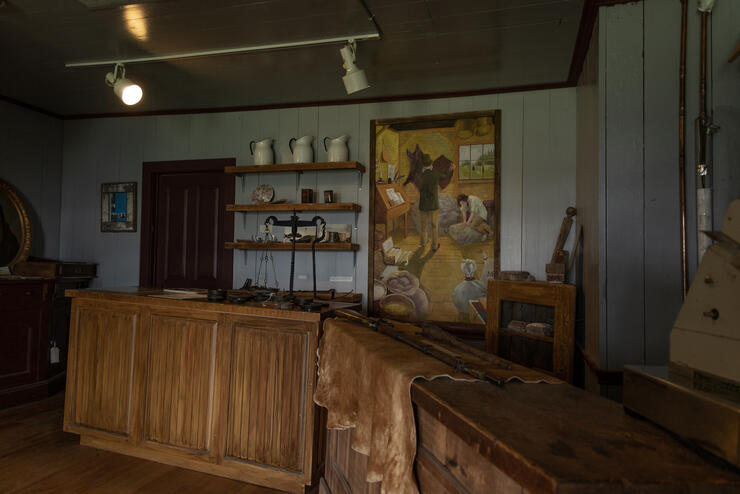
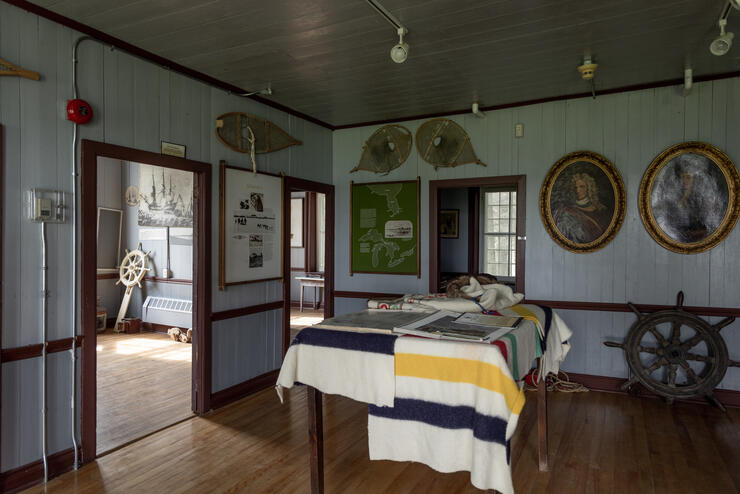
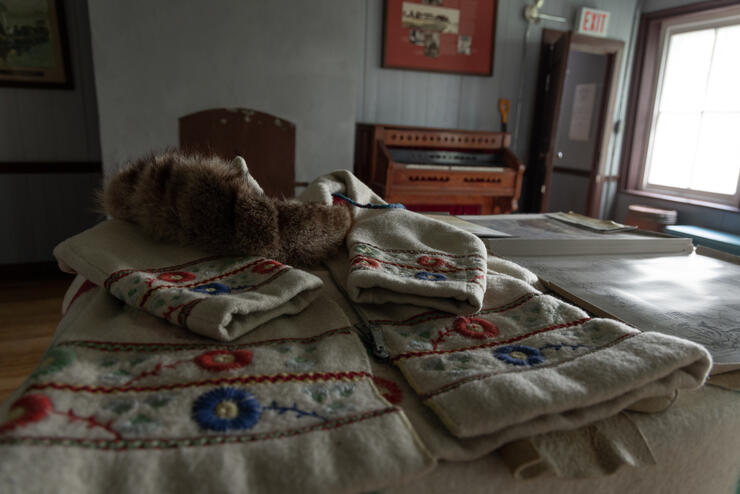
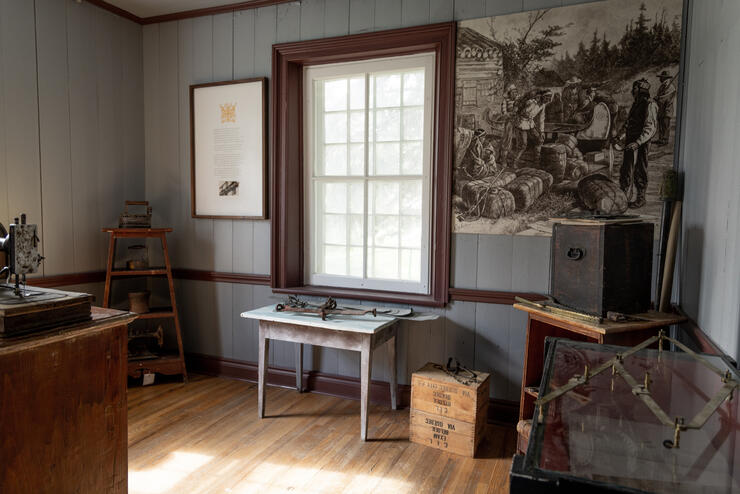
After taking my time to thoroughly examine the museum we got back into the truck to head towards our last destination of the day: Centennial Park. Once the hub of tourism on Moose Factory Island, the park now holds several significant landmarks, but no active displays.
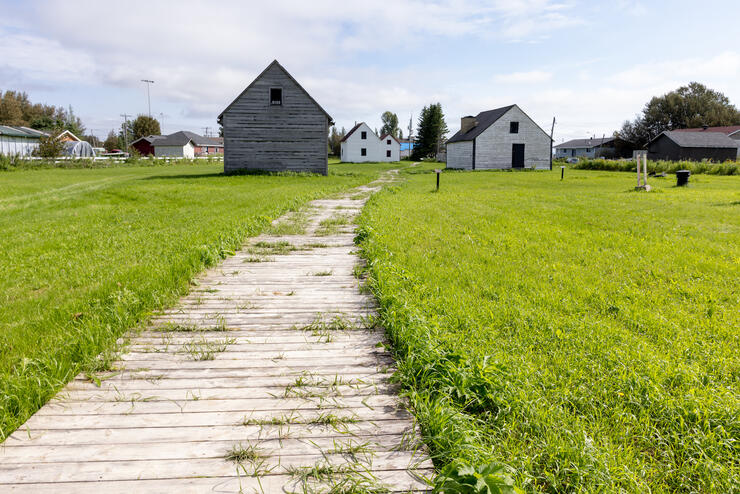
Walking down the wooden boardwalk I was able to witness the remaining houses from the HBC days as well as the HBC cemetery and a cast-iron cannon.
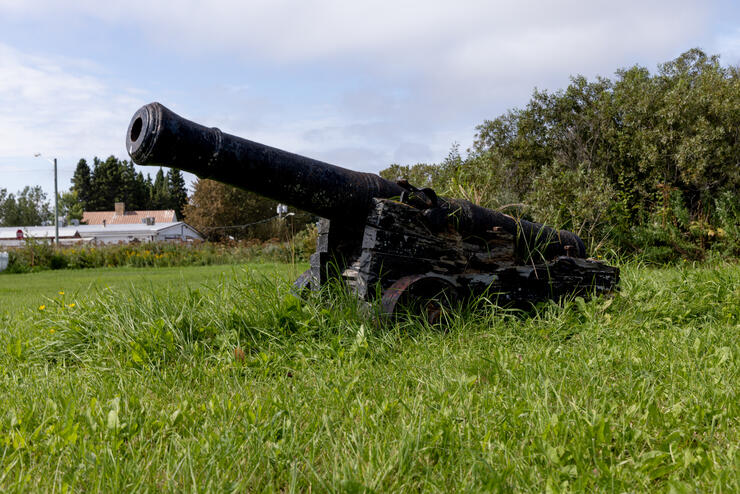
As my tour commenced, I thanked Kim for taking me around Moose Factory Island. She mentioned warmly in passing to include in my article that it’s really a four-season destination. With world-class snowmobiling in the winter, excellent wildlife and hunting opportunities in the fall, beautiful summers, and of course, one of the best spots in the world to view migratory birds in the spring, visitors are welcomed year-round.
Heading Home on The Polar Bear Express
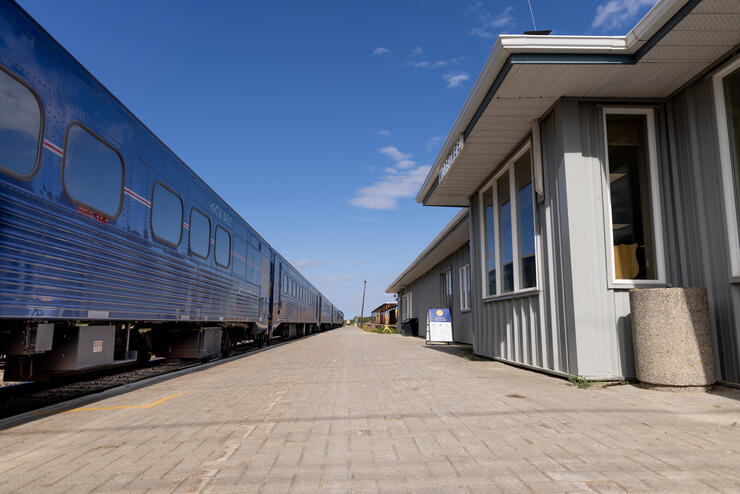
With my tour completed, I hopped onto the Polar Bear Express to begin the return journey home towards Cochrane. As the train passed over the Moose River bridge, the first landmark on the voyage south through the Hudson Bay Lowlands, I reflected on my experience in Moosonee and Moose Factory over the past week.
While the experiences that I had and the attractions that I visited could be classified as tourism, it was different. Something that Laurie Sutherland, Community Coordinator at the Moose River Heritage and Hospitality Association, said to me on my first day in Moosonee had stuck with me all week. She shared that this wasn’t tourism, this was in fact something much deeper than tourism.
A Shared Cultural Experience
This was the Moose Cree people sharing their culture and history, teaching visitors about the land on their own accord. It may not be the sort of place where you put your feet up and get cozy in a 5-star hotel before preparing for a Michelin-star meal, but the communities of Moosonee and Moose Factory are phenomenal destinations for a truly authentic frontier experience. For those who want to learn about the culture of the people who called these lands home long before they were ever considered part of what is now recognized as Northeastern Ontario, Moosonee and Moose Factory are ideal destinations.
After a week of touring the Moose Cree homelands and meeting wonderful people, I was on my way home with new knowledge and a deep sense of gratitude for those who shared it with me.
Meegwetch, Moosonee and Moose Factory.
Recommended Articles
The Seven's Best Hikes, Biking Trails and Lakes

7 Best Spots to Check Out in The Seven

Budget Bliss: Explore Northeastern Ontario Without Breaking the Bank

Bring Your Fam!

Time to Unwind: 6 Spa Havens to Discover In The Seven
5 Amazing Places to SUP in Northeastern Ontario
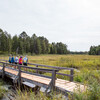
5 Amazing Bike Rides to Discover
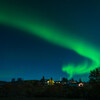
Northern Lights in Northeastern Ontario

Northeastern Ontario's Best Pride Festivals

Fish for one of the World's Rarest Species of Trout

An Insider's Guide to Manitoulin Island
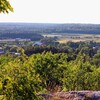
6 Small-Town Gems to Explore in Northeastern Ontario

11 Best Things to Do in Kapuskasing, Ontario




